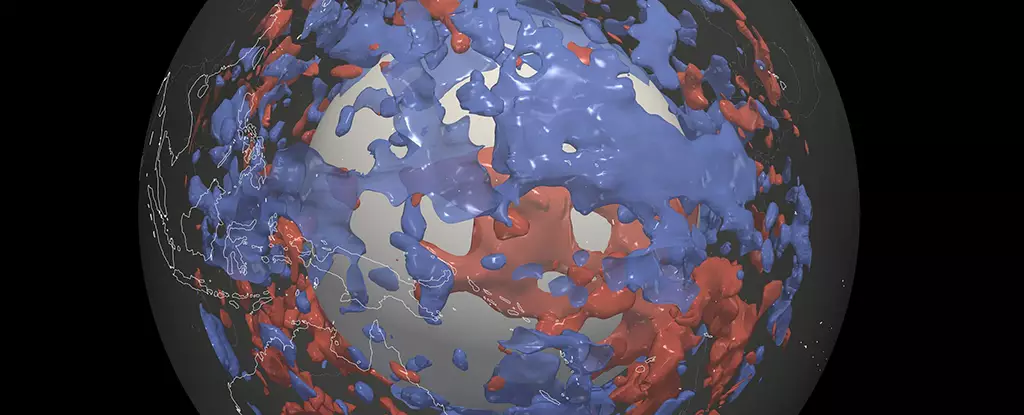For more than a century, scientists have turned to the rhythmic pulse of seismic activity as a means of exploring the hidden features of our planet’s interior. The seismic waves generated by earthquakes act as nature’s sonar, revealing crucial information about the materials beneath our feet. Just as sound waves behave differently when traveling through distinct mediums, seismic waves provide insights into the geological frameworks that shape our world. This innovative field of study has recently been furthered by researchers from ETH Zurich and the California Institute of Technology, who have employed advanced computational power to enhance our understanding of Earth’s lower mantle.
Traditionally, scientists have encountered challenges in accurately deciphering the complex tapestry of our planet’s internal structure, mainly due to limitations in processing capabilities and the reliance on a narrow bandwidth of seismic signals. However, in their recent groundbreaking research, the team harnessed the immense capabilities of the Piz Daint supercomputer. This technological leap allowed them to analyze a comprehensive range of earthquake waves and produce intricate models of Earth’s subsurface. The result? A far more refined picture of geological phenomena deep within our planet.
Through their meticulous work, the research team has made a remarkable discovery: they have identified dense masses of rock resembling fragments of tectonic plates in areas where they should not logically be found. Often the fate of these tectonic remnants is to subduct when one plate slides under another, but the findings suggest that these massive blocks of rock are distributed across the globe, far from any known subduction zones, like the western Pacific Ocean. This revelation challenges long-held notions about the location and dispersion of these geological materials.
Earth scientists are left grappling with a conundrum. The findings imply that there exists a multitude of previously unidentified geochemical structures within the mantle. As Thomas Schouten from ETH Zurich notes, the presence of these anomalous blobs poses questions about their origin. Traditional models have focused primarily on tectonic subduction as the driving force behind the movement of materials; however, this latest study indicates that the mantle’s composition may be influenced by other processes as well.
As the researchers delve deeper into understanding the implications of their findings, Schouten emphasizes the need to expand beyond the surface-level interpretation of seismic wave speeds. Instead of solely relying on velocity data, it is crucial to assess the various material properties that contribute to these readings. This nuanced approach could unveil a richer understanding of what lies beneath: ancient silica-rich formations could be remnants from the Earth’s inception, while iron-rich aggregates may have developed over billions of years due to the dynamics of mantle convection.
The implications of these findings are profound. They not only reshape our understanding of mantle processes but also spark curiosity about the geological history hidden within these subterranean features. The unusual shapes detected beneath regions like the Pacific suggest possible remnants of a once-more extensive tectonic network, revealing the complex interactions between Earth’s crust and mantle.
Future research will be vital in deciphering the composition of these enigmatic chunks. By continuing to analyze seismic data and integrating the findings from varying geological disciplines, scientists aim to construct a clearer narrative regarding the history and evolution of our planet’s interior. Each geological anomaly is a chapter in Earth’s story, waiting to be unraveled through advanced investigation.
As our technology improves and our methodologies evolve, the landscape of geological research will continue to expand. The discoveries made by the ETH Zurich and Caltech team mark a significant milestone in our quest to understand the intricate workings of Earth’s interior. By embracing innovative techniques and fostering interdisciplinary collaboration, we stand on the brink of unlocking the mysteries that lie beneath our feet, allowing us to further appreciate the dynamic processes that shape our planet today. As researchers continue to probe the depths of the mantle, the stories these geological formations tell will not only add to our knowledge of Earth’s history but also inform our understanding of other planetary bodies in the universe.

Leave a Reply